
White supremacy built the United States. It’s been present in the United States since its founding, and it has shaped the country for centuries. But for many Americans, the existence of an active white supremacist movement remained largely in the dark.
On Aug. 11, 2017, it was illuminated with tiki torches.
That evening, members of alt-right groups, including white supremacists and white nationalists, joined together to march through the streets of Charlottesville, Virginia. They descended upon the city from across the country, a flash mob of hate that appeared ostensibly to demonstrate against the city council’s decision to tear down Confederate monuments located in public spaces.
Starting from the campus of the University of Virginia, hundreds of these extremists marched while chanting white supremacist and neo-Nazi phrases: “White lives matter,” “Blood and soil,” and “Jews will not replace us.” One day later, following hours of mess and misinformation, the rally descended into chaos and violence, culminating with a white nationalist driving a car through a crowd of counter-protesters, murdering activist Heather Heyer and injuring 35 others.
The Unite the Right rally was perhaps the most public display of white supremacist ideology in the United States in decades. It was also a confluence of many ingredients that had been simmering for quite some time, all boiling over with the introduction of a single activator: Donald Trump. Now, five years and one insurrection attempt later, it seems like the lid will never go back on the pot. White nationalism, militantism, and authoritarianism are stains, and they aren’t going away.
This was more than a dog whistle to white supremacists — it was a dinner bell ringing, and those groups were as hungry as they’d been in some time.
Charlottesville represented something of an outlier in the path of the American far-right. While extremist groups including white supremacists have always existed within the U.S., and even occasionally would gain mainstream prominence even after the civil rights movement — David Duke, the former grand wizard of the Ku Klux Klan, was elected to the Louisiana House of Representatives in the 1980s and 1990s — there was rarely any sort of organizing between disparate factions. That changed for the Unite the Right rally.
“These groups don’t usually work together,” explains Heidi Beirich, co-founder of the Global Project Against Hate and Extremism. “In fact, they in-fight constantly.” But they put differences aside to organize in 2017 — a feat made possible thanks to the internet and social media. At a time when platforms like Facebook were focusing moderation efforts on limiting the spread of content from international terrorist organizations like Al-Qaeda and the Islamic State, white nationalists and fringe militia groups were growing their presence and communicating with each other.
What got them talking was Trump. Typically, says Beirich, white nationalists and extremist groups avoid actual politics. “They obviously hated Democrats,” she explains, “but they also considered the Republican Party the ‘Stupid Party,’ because they didn’t want to engage on racial issues.” Trump changed that by being unafraid to lean into these areas, something he made clear from the very start of his campaign when he called Mexican immigrants “rapists” who are “bringing drugs, bringing crime.” This was more than a dog whistle to white supremacists — it was a dinner bell ringing, and those groups were as hungry as they’d been in some time.
Part of the reason for that hunger was the fact that these extremist groups were finding newer and younger blood. Alt-right groups like the Proud Boys and Identity Evropa were recently founded and led by younger, white, millennial men who found more like-minded individuals online. They were standing on the infrastructure of white supremacy and hatred that had been building, and they were looking for legitimacy. Suddenly, in 2015, they had someone to rally around in Trump, who seemed to share their politics and managed to gain the presidential nomination of one of the two major political parties in the country.
“They felt emboldened. They felt like they were part of this new America that Donald Trump was forging, and they were going show it by being on the streets and being together.”
Charlottesville was the result of all those elements coming together. “It was a show of force in a climate that they thought was amenable to their politics,” Beirich explains. “They felt emboldened. They felt like they were part of this new America that Donald Trump was forging, and they were going to show it by being on the streets and being together.”
That togetherness included some newfound allies: militia groups. Beirich noted that these armed organizations did not often work together with white nationalists, but the Unite the Right rally saw the barriers between these different branches of the growing alt-right come down. That combination of groups would be reprised on Jan. 6, 2021, when members of the white supremacist and pro-fascist Proud Boys worked in tandem with the far-right, anti-government militia group the Oath Keepers to carry out an attack on the United States Capitol.
But when those groups first came together in downtown Charlottesville, they did so in a particularly brazen way, choosing not to hide their identities. No hoods, no face coverings. Just their faces front and center — a sign that they felt confident that they were a growing political power that faced little threat of repercussion.
They were wrong about that, at least to some extent. It’s true that Trump gave them implicit cover, defending some of the neo-Nazis and white nationalists who marched on Charlottesville as “very fine people” and encouraging a wing of the modern GOP that has come to embrace these fringe figures and beliefs. But the organizers of the Unite the Right Rally, Jason Kessler and Richard Spencer, both faced lawsuits and other legal trouble. Others who showed up to the rally and openly chanted white supremacist messages were identified online. “Unite the Right resulted in major backlash against participants,” explains Carla Hill, the associate director of the Anti-Defamation League’s Center on Extremism. “There were lost jobs, ostracization, arrests, and banishment from mainstream social media platforms.”
That, along with the loss of leadership as organizers faced legal challenges, fractured the far-right once more. The unity they’d found in Charlottesville disappeared. “Long-standing divisions re-emerged and some groups fell apart or splintered as the various segments of the movement argued over the best way forward,” Hill says, noting that one of the biggest breaking points had to do with optics.
Several factions of neo-Nazis, white supremacists, and members of the alt-right overtook the city of Charlottesville, Virginia, on Aug. 11 and Aug. 12, 2017.
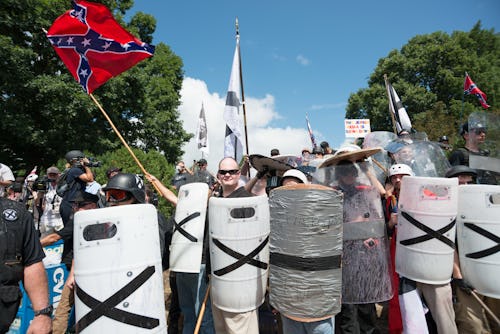
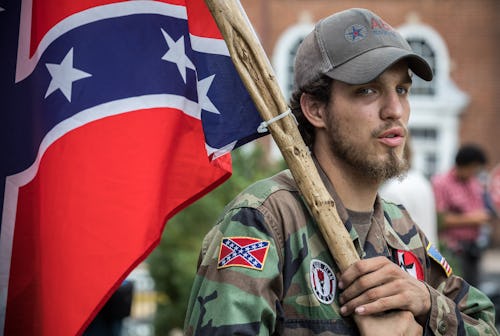
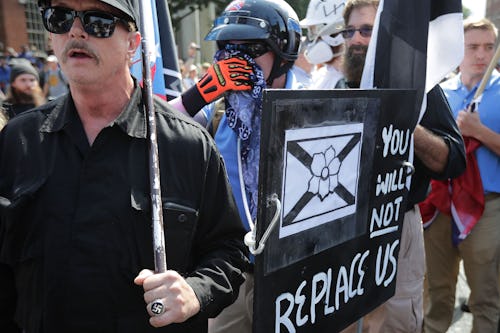
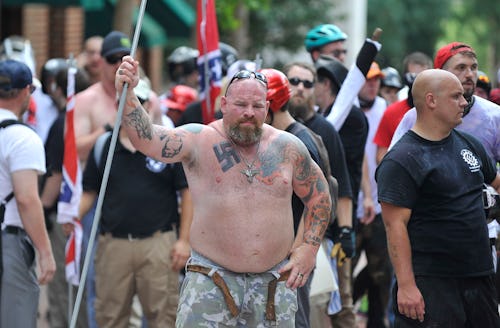
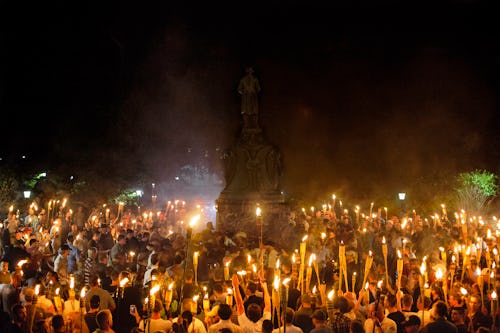
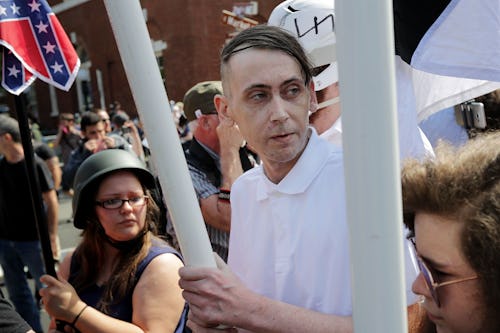
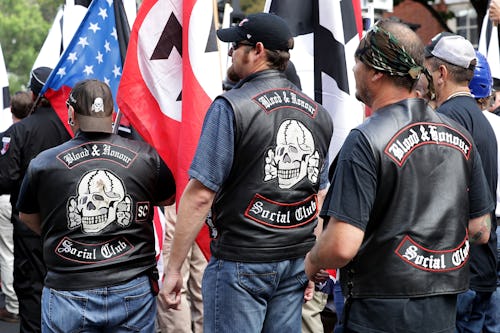
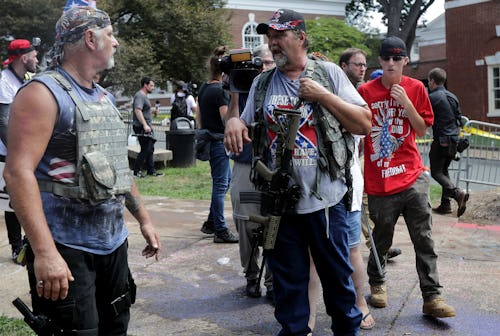
Under the guidance of Kessler and Spencer, white supremacy and modern-day fascism had received a sort of public relations boost. Both were friendly with parts of the press, sitting for interviews and profile stories that spread their messages to a new audience. They also had the cover of President Trump, who was refusing to denounce them even after the violence in Charlottesville.
This success led some in the alt-right to want to maintain the American nationalist symbolism and imagery. But others, Hill says, wanted to focus on “Nazi-like symbolism.” For now, the American nationalist strain has been quite visible, with elected officials like Marjorie Taylor Greene embracing the moniker of “nationalist” and going out of her way to speak at white nationalist conventions. Trump’s coining of the “America First” phrase has lived on, as well.
Behind the scenes, though, Charlottesville spurred some alt-right groups to change their tactics. The rally had been a major, public display of their racist beliefs, but it did lead to backlash for individual members, along with crackdowns on right-wing activity by social media platforms like Facebook and Twitter. Since 2017, many of these groups have shifted away from broadcasting their activity, or have clung to dedicated online spaces like Parler, Gab, or even Trump’s own sputtering platform Truth Social. “There was a retreat from preannounced public activity with focus turned towards anonymous activism such as podcasts, propaganda distributions, and unannounced flash demonstrations,” Hill says.
This hasn’t slowed the growth of white supremacist ideology, though it has changed it. According to the Southern Poverty Law Center, these groups saw a 55% increase in membership since Trump took office. And it’s not just the organized factions, either. There has been a growing number of white nationalists carrying out violent and deadly attacks without direct ties to a particular organization. They have largely been driven by the “great replacement” conspiracy that posits that people of color are seeking to replace and overtake white people in America — a theory that was present at the Unite the Right rally and has since been mainstreamed by the likes of Tucker Carlson and others in the conservative media ecosystem.
The far-right has evolved considerably since Charlottesville, which served as a test run for the mainstreaming of white supremacy and fascism. It was mostly a success: Racism and nationalism factor more overtly into American politics than ever before, even as individuals of the movement have somewhat retreated from the public eye. But make no mistake. These groups have not disappeared, and their ideologies have not dissipated. They have simply grown in new ways, radicalizing people through conspiracy and draping their beliefs in a more digestible nationalism. They aren’t on the streets chanting “Jews will not replace us,” but they are finding more and more people who find resonance in that messaging, and a political party that is still beholden to one person who won’t reject those ideas.







